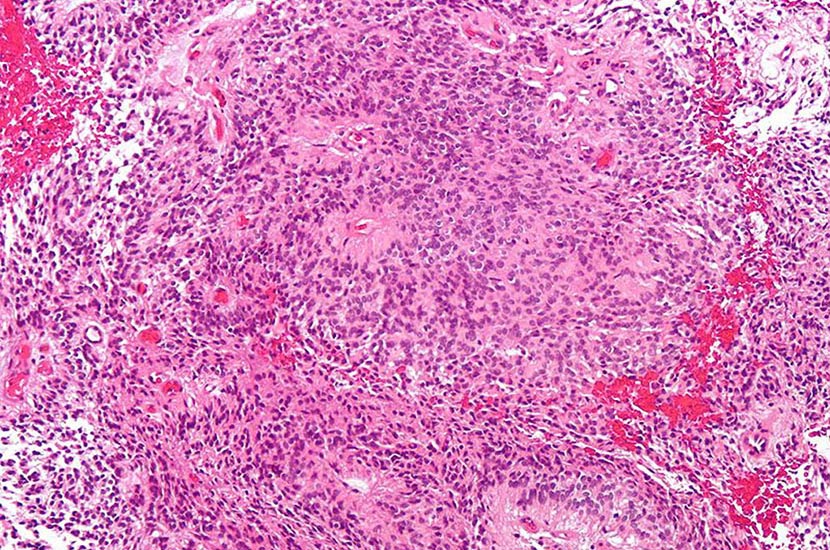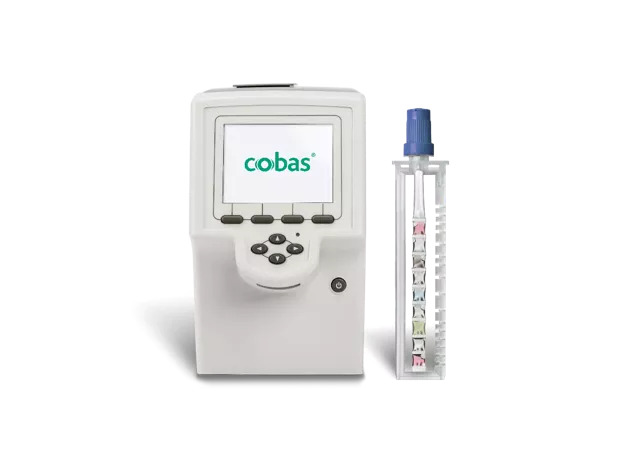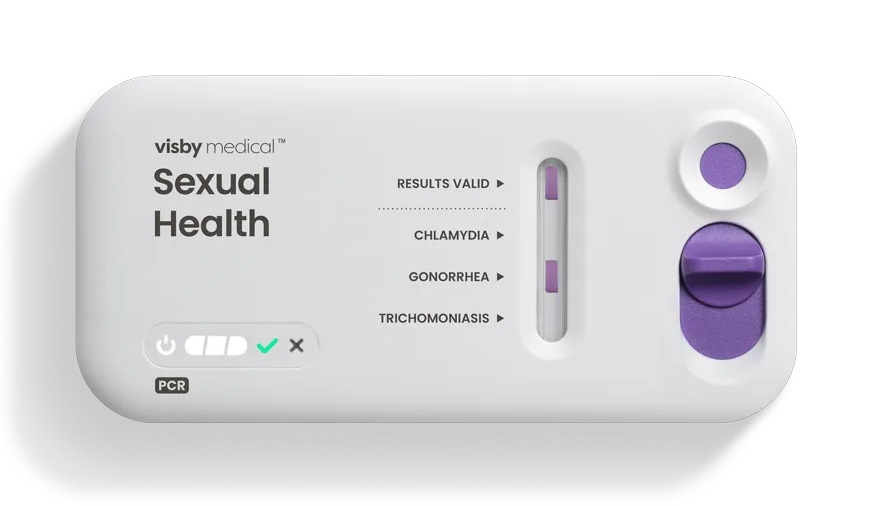Epigenetic Biomarker Predicts Outcome of Childhood Brain Cancer
|
By Gerald M. Slutzky, PhD Posted on 07 Dec 2016 |

Image: A micrograph of an ependymoma (Photo courtesy of Wikimedia Commons).
Cancer researchers have identified a biomarker that predicts the likely outcome of the childhood brain cancer posterior fossa ependymoma (PF).
This type of cancer is characterized by tumors found largely in the hind brain (consisting of the cerebellum, pons, and the brainstem) of children. The prognosis of these tumors does not necessarily correlate with clinical characteristics or even tumor grade, and there are no recurrent genetic mutations that can be used to classify these tumors.
An international team of researchers led by investigators at Children's Hospital Los Angeles (CA, USA) and the University of Michigan (Ann Arbor, USA) searched for other markers that might be used to classify PF tumors. To this end, they focused on the epigenetics of ependymoma tumors, specifically on the methylation pattern of histones in the tumor cells.
The investigators reported that most PF tumors lacked methylation of histone H3. Approximately 80% exhibited loss of the H3K27me3 biomarker, while 20% of tumors retained H3K27me3. By linking H3 methylation to clinical outcomes, the investigators showed that H3K27me3 immunostaining served as a biomarker for poor prognosis and delineated radiologically invasive tumors, suggesting that reduced H3K27me3 may be a prognostic indicator in PF ependymomas.
"Detection of H3K27me3 by immunohistochemical staining is a widely available and cost effective surrogate molecular marker. This test can be readily implemented in most departments of pathology and provides a much-needed tool to risk stratify and identify ependymoma patients who would potentially benefit from epigenetic therapies," said contributing author Dr. Alexander R. Judkins, head of pathology and laboratory medicine at Children's Hospital Los Angeles.
"By demonstrating the epigenetic mechanism - that we theorize likely goes awry during brain development - we will be better able to identify these tumors, determine a more accurate prognosis and - importantly -perhaps develop better therapeutic options," said senior author Dr. Sriram Venneti, professor of pathology at the University of Michigan.
The study was published in the November 23, 2016, online edition of the journal Science Translational Medicine.
Related Links:
Children's Hospital Los Angeles
University of Michigan
This type of cancer is characterized by tumors found largely in the hind brain (consisting of the cerebellum, pons, and the brainstem) of children. The prognosis of these tumors does not necessarily correlate with clinical characteristics or even tumor grade, and there are no recurrent genetic mutations that can be used to classify these tumors.
An international team of researchers led by investigators at Children's Hospital Los Angeles (CA, USA) and the University of Michigan (Ann Arbor, USA) searched for other markers that might be used to classify PF tumors. To this end, they focused on the epigenetics of ependymoma tumors, specifically on the methylation pattern of histones in the tumor cells.
The investigators reported that most PF tumors lacked methylation of histone H3. Approximately 80% exhibited loss of the H3K27me3 biomarker, while 20% of tumors retained H3K27me3. By linking H3 methylation to clinical outcomes, the investigators showed that H3K27me3 immunostaining served as a biomarker for poor prognosis and delineated radiologically invasive tumors, suggesting that reduced H3K27me3 may be a prognostic indicator in PF ependymomas.
"Detection of H3K27me3 by immunohistochemical staining is a widely available and cost effective surrogate molecular marker. This test can be readily implemented in most departments of pathology and provides a much-needed tool to risk stratify and identify ependymoma patients who would potentially benefit from epigenetic therapies," said contributing author Dr. Alexander R. Judkins, head of pathology and laboratory medicine at Children's Hospital Los Angeles.
"By demonstrating the epigenetic mechanism - that we theorize likely goes awry during brain development - we will be better able to identify these tumors, determine a more accurate prognosis and - importantly -perhaps develop better therapeutic options," said senior author Dr. Sriram Venneti, professor of pathology at the University of Michigan.
The study was published in the November 23, 2016, online edition of the journal Science Translational Medicine.
Related Links:
Children's Hospital Los Angeles
University of Michigan
Latest Pathology News
- New WHO Reporting System for Lung Cytopathology to Enhance Diagnostic Accuracy
- Self-Taught AI Tool Diagnoses and Predicts Severity of Common Lung Cancer
- Novel AI-Powered Method for Tissue Analysis Improves Understanding of Disease Pathology
- Noninvasive Technology Detects Rare Cancer Cells in Blood
- AI Tool Detects Tiny Protein Clumps in Microscopy Images in Real-Time
- New Tool Enables Better Classification of Inherited Disease-Causing Variants
- Groundbreaking CRISPR Screen Technology Rapidly Determines Disease Mechanism from Tissues
- New AI Tool Classifies Brain Tumors More Quickly and Accurately
- AI Integrated With Optical Imaging Technology Enables Rapid Intraoperative Diagnosis
- HPV Self-Collection Solution Improves Access to Cervical Cancer Testing
- Hyperspectral Dark-Field Microscopy Enables Rapid and Accurate Identification of Cancerous Tissues
- AI Advancements Enable Leap into 3D Pathology
- New Blood Test Device Modeled on Leeches to Help Diagnose Malaria
- Robotic Blood Drawing Device to Revolutionize Sample Collection for Diagnostic Testing
- Use of DICOM Images for Pathology Diagnostics Marks Significant Step towards Standardization
- First of Its Kind Universal Tool to Revolutionize Sample Collection for Diagnostic Tests
Channels
Clinical Chemistry
view channel
New ADLM Guidance Provides Expert Recommendations on Clinical Testing For Respiratory Viral Infections
Respiratory tract infections, predominantly caused by viral pathogens, are a common reason for healthcare visits. Accurate and swift diagnosis of these infections is essential for optimal patient management.... Read more
3D Printed Point-Of-Care Mass Spectrometer Outperforms State-Of-The-Art Models
Mass spectrometry is a precise technique for identifying the chemical components of a sample and has significant potential for monitoring chronic illness health states, such as measuring hormone levels... Read more.jpg)
POC Biomedical Test Spins Water Droplet Using Sound Waves for Cancer Detection
Exosomes, tiny cellular bioparticles carrying a specific set of proteins, lipids, and genetic materials, play a crucial role in cell communication and hold promise for non-invasive diagnostics.... Read more
Highly Reliable Cell-Based Assay Enables Accurate Diagnosis of Endocrine Diseases
The conventional methods for measuring free cortisol, the body's stress hormone, from blood or saliva are quite demanding and require sample processing. The most common method, therefore, involves collecting... Read moreMolecular Diagnostics
view channel
Four-In-One Molecular Test Detects and Differentiates Among Most Prevalent Respiratory Viruses in 20 Minutes
The U.S. Centers for Disease Control and Prevention (CDC) has reported that respiratory diseases in the United States reached high levels during the recent autumn and winter seasons, with SARS-CoV-2 leading... Read more.jpeg)
First-Line PSA Testing More Cost-Effective Than First-Line MRI for Prostate Cancer Screening
Current prostate cancer (PCa) screening protocols typically begin with prostate-specific antigen (PSA) testing, which, if elevated, may lead to further assessment using multiparametric magnetic resonance... Read more
Proteomics Platform Identifies Proteins in Blood to Give Cancer Warning 7 Years before Diagnosis
To improve cancer survival rates, it's crucial to understand the disease during its initial stages. Research involving data from thousands of cancer patients has uncovered exciting findings about how blood... Read moreHematology
view channel
Next Generation Instrument Screens for Hemoglobin Disorders in Newborns
Hemoglobinopathies, the most widespread inherited conditions globally, affect about 7% of the population as carriers, with 2.7% of newborns being born with these conditions. The spectrum of clinical manifestations... Read more
First 4-in-1 Nucleic Acid Test for Arbovirus Screening to Reduce Risk of Transfusion-Transmitted Infections
Arboviruses represent an emerging global health threat, exacerbated by climate change and increased international travel that is facilitating their spread across new regions. Chikungunya, dengue, West... Read more
POC Finger-Prick Blood Test Determines Risk of Neutropenic Sepsis in Patients Undergoing Chemotherapy
Neutropenia, a decrease in neutrophils (a type of white blood cell crucial for fighting infections), is a frequent side effect of certain cancer treatments. This condition elevates the risk of infections,... Read more
First Affordable and Rapid Test for Beta Thalassemia Demonstrates 99% Diagnostic Accuracy
Hemoglobin disorders rank as some of the most prevalent monogenic diseases globally. Among various hemoglobin disorders, beta thalassemia, a hereditary blood disorder, affects about 1.5% of the world's... Read moreImmunology
view channel.jpg)
AI Tool Predicts Cancer Patients’ Response to Immunotherapy
Immune checkpoint inhibitors are a form of immunotherapy drug that enables immune cells to target and destroy cancer cells. At present, the Food and Drug Administration has approved two predictive biomarkers... Read more
Molecular Profiling Improves Diagnosis for Children with High Risk Cancers
Cancer remains the leading cause of disease-related death among children in most developed nations, and approximately one-fourth of these patients are diagnosed with aggressive, high-risk, or relapsed... Read moreMicrobiology
view channel
POC STI Test Shortens Time from ED Arrival to Test Results
In a 2024 sexually transmitted infections (STIs) surveillance report by the World Health Organization (WHO), over 2.5 million cases were recorded, alongside a rise in the inappropriate use of antibiotics... Read more
Integrated Solution Ushers New Era of Automated Tuberculosis Testing
Tuberculosis (TB) is responsible for 1.3 million deaths every year, positioning it as one of the top killers globally due to a single infectious agent. In 2022, around 10.6 million people were diagnosed... Read more
Automated Sepsis Test System Enables Rapid Diagnosis for Patients with Severe Bloodstream Infections
Sepsis affects up to 50 million people globally each year, with bacteraemia, formerly known as blood poisoning, being a major cause. In the United States alone, approximately two million individuals are... Read moreEnhanced Rapid Syndromic Molecular Diagnostic Solution Detects Broad Range of Infectious Diseases
GenMark Diagnostics (Carlsbad, CA, USA), a member of the Roche Group (Basel, Switzerland), has rebranded its ePlex® system as the cobas eplex system. This rebranding under the globally renowned cobas name... Read moreTechnology
view channel
Microneedle Patch Detects Skin Cancer Early
Wearable bioelectronics has emerged as a significant innovation in healthcare, especially in the field of biosensing, providing a new method to monitor individual health for both diagnostic and therapeutic purposes.... Read more
New Diagnostic System Achieves PCR Testing Accuracy
While PCR tests are the gold standard of accuracy for virology testing, they come with limitations such as complexity, the need for skilled lab operators, and longer result times. They also require complex... Read moreIndustry
view channel
Roche and Hitachi High-Tech Extend 46-Year Partnership for Breakthroughs in Diagnostic Testing
Roche (Basel, Switzerland) and Hitachi High-Tech (Tokyo, Japan) have renewed their collaboration agreement, committing to a further 10 years of partnership. This extension brings together their long-standing... Read more
Danaher and Johns Hopkins University Collaborate to Improve Neurological Diagnosis
Unlike severe traumatic brain injury (TBI), mild TBI often does not show clear correlations with abnormalities detected through head computed tomography (CT) scans. Consequently, there is a pressing need... Read more
Beckman Coulter and MeMed Expand Host Immune Response Diagnostics Partnership
Beckman Coulter Diagnostics (Brea, CA, USA) and MeMed BV (Haifa, Israel) have expanded their host immune response diagnostics partnership. Beckman Coulter is now an authorized distributor of the MeMed... Read more_1.jpg)












.jpg)


